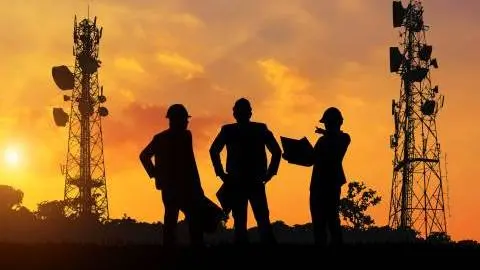More Europeans set to benefit from 5G networks in 2023
Five billion people are expected to be connected to 5G networks by 2028. But network coverage and speeds still vary, and higher spectrum frequencies are going to be a game-changer
More people are going to have a 5G handset
The use of 5G services is really starting to take off, mainly driven by the improved availability of handsets but also, off-course, by the 5G network roll-out. In its 2022 mobility report, Ericsson expected that by the end of 2022, there would be 1 billion 5G subscriptions globally (enabled by a 5G device). They expect this number to increase to 5 billion by the end of 2028. The market intelligence firm IDC expects that the global shipment of 5G devices rose by 23.6% in 2022 compared with the previous year. This implies that more than half of the 688 million devices shipped will be 5G-enabled.
Affordability is key for 5G adoption and we're now seeing relatively cheap 5G smartphones, such as the Samsung Galaxy A13 5G or the OnePlus Nord N200 5G smartphone, with a price tag of around $200. This implies that fast 5G connections are within reach of increasing numbers of customers. The high-end iPhone models that dominate, for example, the Dutch speed test, are prohibitively expensive for people with a lower income.
Users with 5G access
Based on coverage, 5G handset, 5G subscription, 3Q22

The number of people using 5G is increasing
Based on data from the network intelligence firm Ookla, we see that 54% of users in the USA with a 5G capable handset have a 5G network available to them. For the Netherlands, this percentage is 34%, while it is 19% for France and 18% for Germany. Their results are somewhat difficult to interpret because customers also need a 5G subscription to have access to a network. In some areas, there could be 5G network coverage, but customers do not have a 5G subscription.
Telecom equipment manufacturer Ericsson measures actual coverage figures. They report that in the USA, 95% of the population is covered with a 5G service, using a low band spectrum. In Europe, they estimate that by the end of 2022, 5G coverage would be available to around 65% of the population in the EU plus Norway, the UK, Iceland and Switzerland. They write that some operators in the region may reach 80% of the population.
The game changer comes from networks using a higher frequency spectrum as well as from a stand-alone network configuration. In the Nordics, Telia launched a 5G stand-alone network in Finland, which is a first for the region. It will be interesting to see in 2023 if they provide innovative services that could be enabled by 5G.
5G speeds are a differentiating factor for mobile network operators
According to Ookla, 5G download speeds (as experienced by users) stabilised in the third quarter of 2022 compared to last year, with a median global 5G download speed of 168.27 Mbps. However, there are many differences within countries. This is likely to give the market leaders a competitive edge. Although Ookla does not provide data for all countries, we think the following results could predict developments in other European countries as well.
In the Netherlands, the market leader KPN has a (weighted) average 5G download speed of 184Mbits, which is 81% faster than the third fastest network (Vodafone). Weighted average upload speeds for the market leader are 38Mbits, more than twice as fast as the third fastest network. When looking at ten per cent of those users with the slowest download speeds, speeds for KPN customers are 2.6 times faster than the slowest network.
In the UK, results are similar. The operator with the fastest network, Three UK, is 3.4 times faster than the operator with the slowest speed, O2. The difference is a factor of 1.5x for upload speeds. In Norway, the weighted average download speeds from the Telenor network are more than twice as fast as the download speed of Ice, while upload speeds are 40% faster. In Ireland, the average upload speeds for Three are 55% faster than those of the third fastest network, Vodafone.
So we conclude that 5G is not the same everywhere. Telecom operators may need to find ways to monetise this advantage, while the market leader is also better placed to offer the new services that come with 5G, such as network slicing and applications that require a low latency once they have fully upgraded the network to 5G technology.
Download
Download article
7 February 2023
Telecoms Outlook 2023: Navigating challenges at the speed of light This bundle contains {bundle_entries}{/bundle_entries} articlesThis publication has been prepared by ING solely for information purposes irrespective of a particular user's means, financial situation or investment objectives. The information does not constitute investment recommendation, and nor is it investment, legal or tax advice or an offer or solicitation to purchase or sell any financial instrument. Read more
